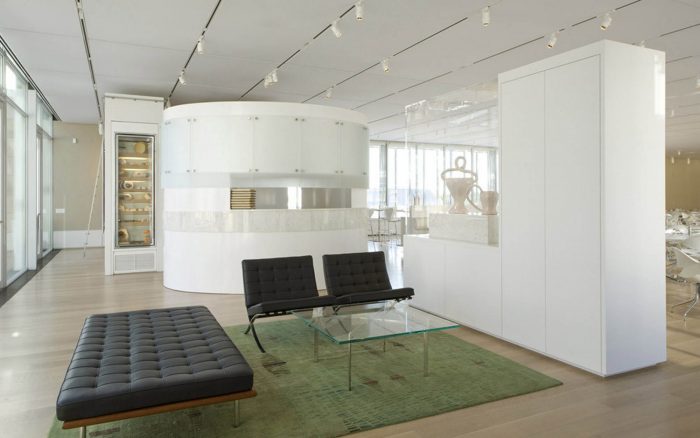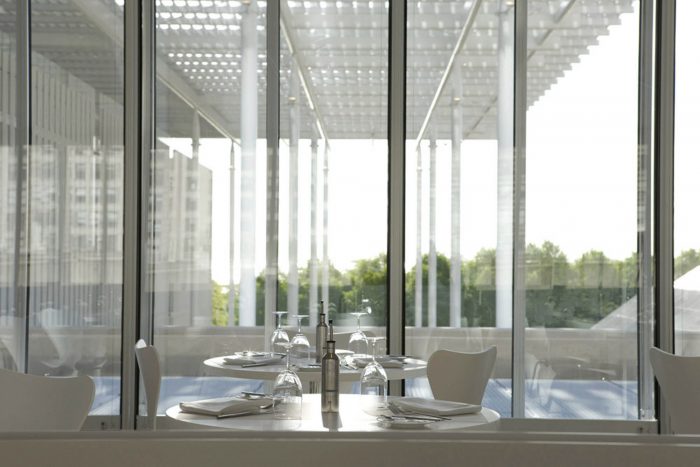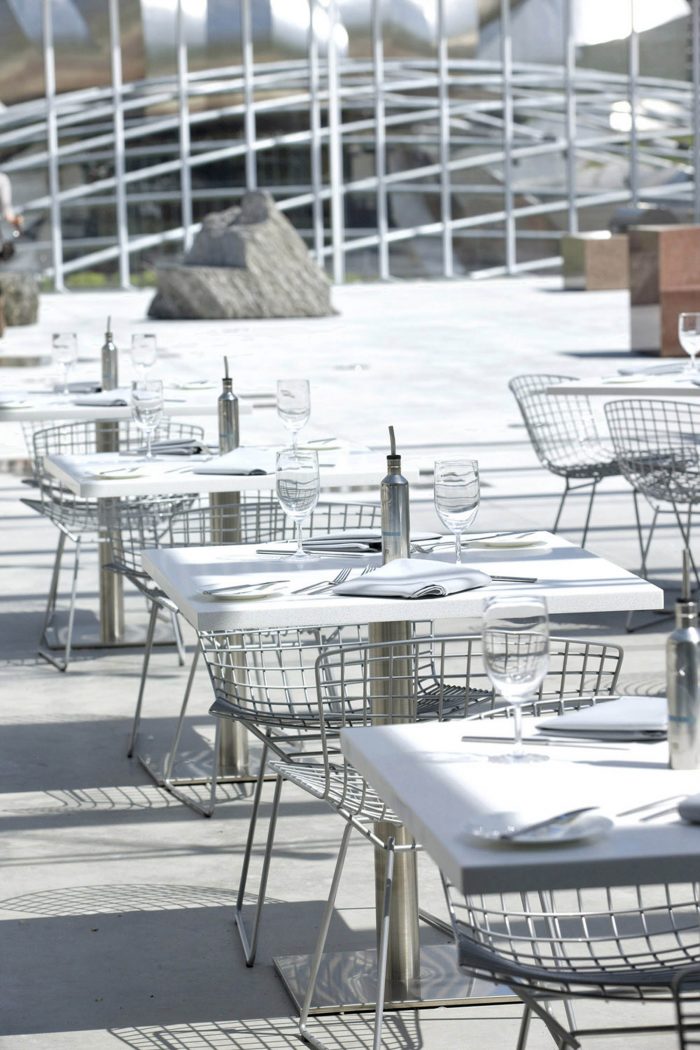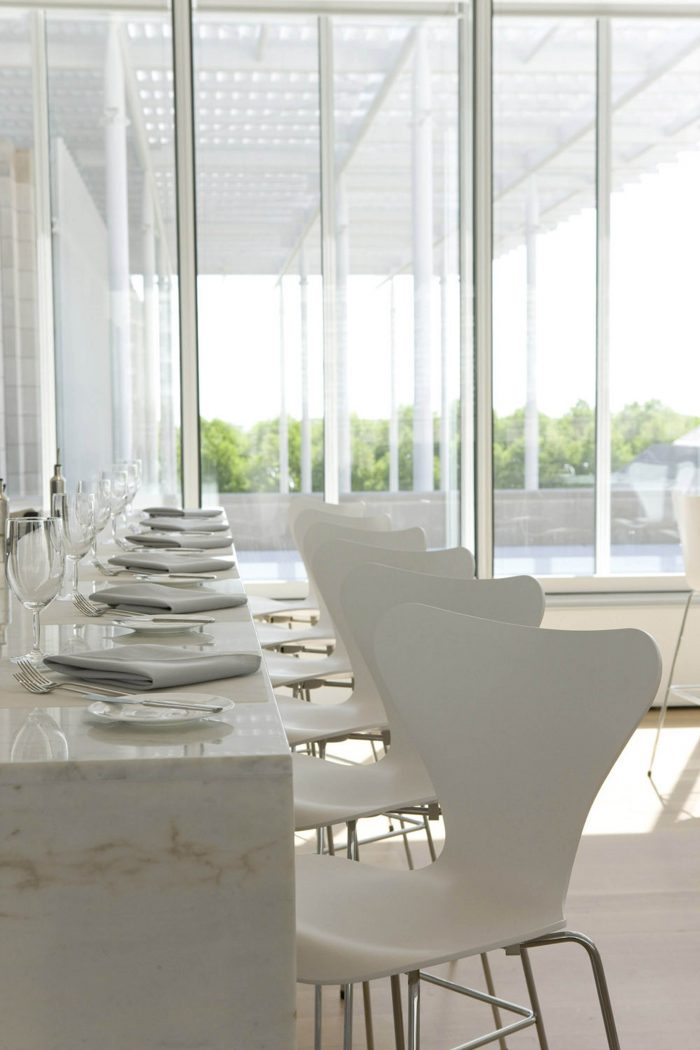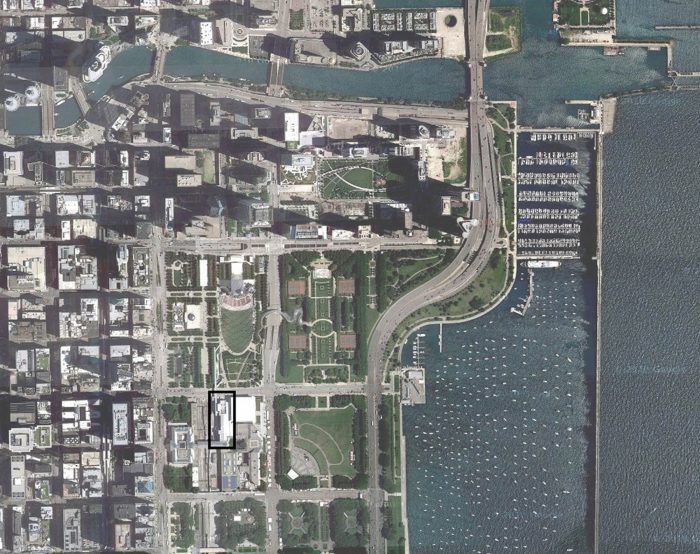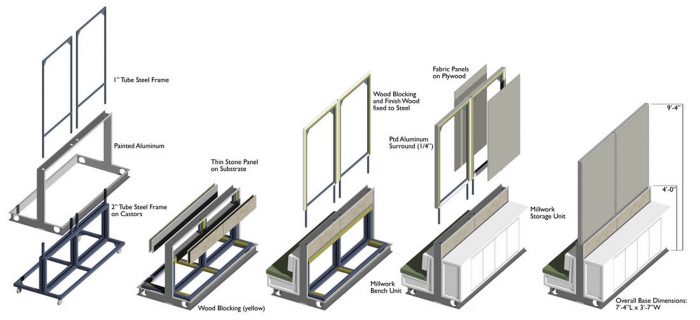Terzo Piano餐厅被设计成一块可移动的画布,可灵活安排座位。午餐餐厅可容纳250名顾客,位于芝加哥艺术学院伦佐-皮亚诺设计的现代翼内。因此,建筑师面临的挑战是建立一个现代空间,为现代翼提供一个互补的氛围。最近获得了2010年AIA芝加哥奖。评委们评论说:”它提升了食堂的体验”,”在用餐区有艺术的整个想法很优雅”。
Terzo Piano Restaurant was designed as a changeable canvas with movable pieces and flexible seating arrangements. Seating 250 patrons the lunch restaurant is located within the Renzo Piano designed Modern Wing at the Art Institute of Chicago. The architects therefore were challenged with establishing a contemporary space that provided a complementary atmosphere to the Modern Wing. A recent recipient of a 2010 AIA Chicago Award: Citation of Merit for Interior Architecture, jurors commented, “It’s elevated the cafeteria experience,” and “The whole idea of having art in the dining area is elegant.”
我们确定,餐厅的设计将把博物馆的体验延续到用餐区。为了实现这一目标,我们添加了一系列固定元素,作为活动节点组织起来,它们从8500平方英尺的空间的墙壁和天花板上自由站立。展示玻璃瓶中陈列着博物馆收藏的轮换作品,并为不同的用餐区域带来了特色,提供了松散的边界边缘。餐厅的午餐时间和大面积的窗户也推动了空间中自然光的存在。选择以白色为主的调色板,包括树脂台面,当拍摄光线时,它们会发光,这是为捕捉阳光在每天的过程中变化的光芒和阴影而做出的直接努力。
We established that the design of the restaurant would continue the experience of the museum into the dining area. To achieve this we added a series of fixed elements, organized as nodes of activity, which stand free from the walls and ceiling of the 8500 sqf space. Display vitrines house rotating pieces from the Museum’s collection and bring character to the various dining areas, providing loose edges of boundary. The lunch-only schedule of the restaurant and large areas of window also drove the undeniable presence of natural light in the space. The choice of a predominantly white palette, including resin tabletops which glow when shot with light, was a direct effort to capture the radiance and shadows of the changing presence of sunlight over the course of each day.
客人通过公共露台和餐厅之间的入口 “缓冲区 “进行导航。关键的操作元素被收集在这里:一个平静而现代的休息区,带有一个展示的玻璃瓶,一个弧形的马槽漂浮在外面,此外,一个紧密的程序化的体积,包含酒吧,定制的葡萄酒和奶酪展示,饮料服务和葡萄酒室。这些体量元素都采用了清新淡雅的色调,高度不一,但都没有触及天花板。在这个项目中,Gardde manger的位置和设计特别有参考价值–因为在二楼画廊之上的建筑受到限制,这意味着在空间最南端的厨房和北端的餐饮区之间有一段很长的距离。为了解决这个问题,主厨和经营者要求在餐厅的公共区域设置一个卫星车库。我们将其作为一个 “开放式厨房”,让食物和服务得以展示,并采用了金属喷涂形状的柔和曲线来突出其存在。
Guests navigate through an entry “buffer zone” between the public terrace and the restaurant. Key operational elements are collected here: a calm and modern lounge area with a display vitrine, a curved garde manger floating beyond, and further, a tightly- programmed volume containing the bar, custom wine and cheese display, beverage service and wine room. These volumetric elements are all dressed in a crisp, light palette and are of varied heights, though none touches the ceiling. The location and design of the garde manger were particularly informative in this project – as there were restrictions for building above the second floor galleries below, which meant an extended distance between the kitchen on the far south end of the space and the dining areas on the north end. To bridge this, the Chef and operators asked for a satellite garde manger in the public area of the restaurant. We embraced this as an “open kitchen” allowing the food and service to be on display and the gentle curve of the painted metal shape is employed to highlight its presence.
设计的一个重要方面是可变性的概念。餐厅只提供午餐,但该空间同时也是一个精致的宴会空间,可用于私人晚间活动。这就意味着餐厅的容量和装饰及特色的变化。我们设计了一系列可移动的家具,这些家具可以重新配置以定义和重新定义整体空间。每一个元素都是一连串的长椅,后面是一个书柜,悬挂在脚轮上的钢架上–有五个单元还有一个可移动的上层布艺板,可以组合在一起建立一个分隔的 “墙”。中性布艺墙面(安装在消音材料上)和白色为主,让客人可以根据自己的需要来装扮房间。
A critical aspect of the design was the concept of changeability. The restaurant is lunch- only, but the space doubles as a sophisticated banquet space, available for private evening events. This meant a fluctuating capacity and shifts in décor and character. We designed a series of movable furniture pieces, which can be reconfigured to define and redefine the overall space. Each element is a run of banquette seating backed by a credenza, suspended on steel frame on casters – and five units also have a removable upper fabric panel which can be grouped to establish a dividing “wall.” The neutral fabric wall finish (installed over sound attenuating material) and predominance of white allow guests to dress the room they see fit.
建筑师:Dirk Denison Architects
年份:2009年
摄影:Michelle Litvin Photography
城市 : 芝加哥
国家:美国
Architects: Dirk Denison Architects
Year: 2009
Photographs: Michelle Litvin Photography
City: CHICAGO
Country: UNITED STATES



